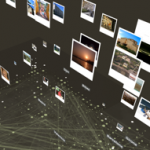Mar13
Andrea Meyer
Point: Use technology to get real-time, full-time feedback from users
Story: Designing new products seems like a guessing game: which features do users want? In the early days, engineers had to guess. Then came market research: asking people which features they’d like to have or which they prefer from among the choices. Of course, users often have difficulty articulating what they want.
Next, some companies hired ethnographers to observe users in action. Software maker Intuit, for example, sent software engineers to watch how users tried to use accounting software. Intuit’s QuickBooks succeeded because its developers had watched users struggle with traditional accounting software and solved the difficulties they were having.
Other companies built usability labs, which have the advantage of measurement but are in controlled settings. Ethnographic techniques and usability labs improve upon market research, but they are expensive and can only watch a small sample of users for a short time.
Now, technology lets companies go one better. Software companies who host their applications in the cloud can see what customers are doing – in real time, all the time. They can see which features really get used and which don’t. They can notice if users hit the “undo” button frequently, which suggests that the feature isn’t doing what users expect it to do. Sam Shillance, co-creator of Writely, found that what users of his word processing tool wanted most was a way to let several people edit a document together. (The Writely app was bought by Google and is now in Google Docs). Finally, as new types of users adopt the product or as new uses arise, developers can continue to adapt their software from the stream of feedback of usage patterns.
Action
- Think about how you can put more of your product or service? on the web or in cloud media so that you can watch user behavior.
- Look for evidence of frustration (e.g., use of “Undo,” help requests, problem reports)
- Watch which features users use first, and keep those simple. That will make your product easy to adopt and will reduce first-use frustration.
- Improve the functionality of the most-used features.
- De-emphasize (or rework) the least-used features.
For further information: The Netbook Effect by Clive Thompson
Capital, How-to, New Product Development
Mar11
Andrea Meyer
Point: Use publicly-available photos to shed light on tourist delight
Story: Barcelona invested heavily to revamp the city to attract tourists for the Olympics and beyond. What places did tourists visit? What did they see and like? What did they tell their friends about? The city can measure tourism dollars, but the intangible experience of pleasure is harder to measure.
The Los Ojos Del Mundo (The World’s Eyes) project helps provide some answers. The project looks at the publicly-available photos on Flickr that people post of Spain. Using data mining and visualization techniques, team members from MIT’s SENSEable city lab plotted photos onto a map of Spain. The concentration of photos shows which places tourists deem most photoworthy and want to share with their friends.
Action: Consider what data is publicly available on your product, brand, or city. Flickr, Twitter and blogs are all rich sources of user-generated photos, opinions or reviews. Analyze which features or aspects of your product are displayed or mentioned. This data helps reveal how customers portray, experience or feel about your product.
For more information: See Los ojos del mundo (the world’s eyes) for full information on the project as well as additional photos, courtesy of http://senseable.mit.edu/worldseyes/press.html
Girardin, F., Calabrese, F., Dal Fiore, F., Ratti, C., and Blat, J. (2008). Digital footprinting: Uncovering tourists with user-generated content. IEEE Pervasive Computing, 7(4):36-43.
Girardin, F., Dal Fiore, F., Ratti, C., and Blat, J. (2008). Leveraging explicitly disclosed location information to understand tourist dynamics: A case study. Journal of Location-Based Services, 2, 1, 41-54.
For more on creative design and the field of information visualization: Information Aesthetics
Customers, How-to, Innovation, Metrics
Mar06
Andrea Meyer
Point: Enlist hobbyists for mutual benefit
Story: Every night, hundreds of amateur astronomers photograph the night sky. Some have joined the Astronometry group on Flickr to upload and share their photos with others. The Astronometry.net project created an algorithm that helps identify the celestial objects in the photo. Hobbyists who submit their photos get a clear identification of what they photographed. In turn, the automated astronometry project adds to its storehouse of knowledge of planets, galaxies and other space phenomena. Currently, the project is calculating the path that comet Holmes took through the sky.
This project shows that the average person can still make a contribution to astronomical science, without having high-powered equipment. “There’s a large number of excellent amateur setups out there, and they discover supernovae and minor planets regularly,” said project team member Christopher Stumm of Microsoft in an interview, “We believe that if the information generated by the amateur astronomer community is harnessed, we could build an open-source sky survey much faster.”
Action: Find a group of enthusiasts in your field of interest. Use social media tools they likely already use (like Flickr). Give them a benefit to participate in your project – it could be a direct benefit (like identification their photo) and or a broader benefit, like satisfaction of participating in the advancement of science.
For more information, see: Found in Space

Lulin Composite photo by Richie Jarvis - UK
How-to, Innovation, Opportunity












